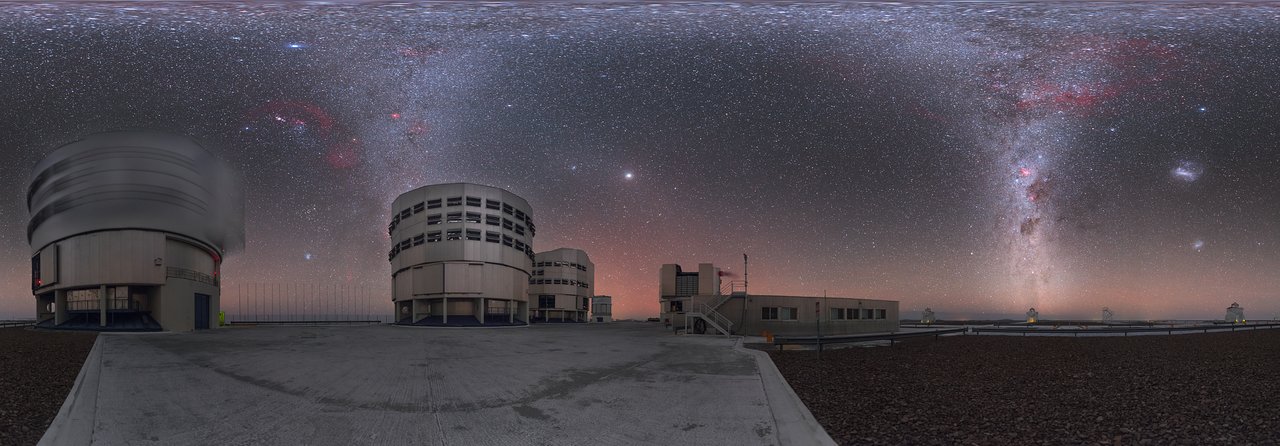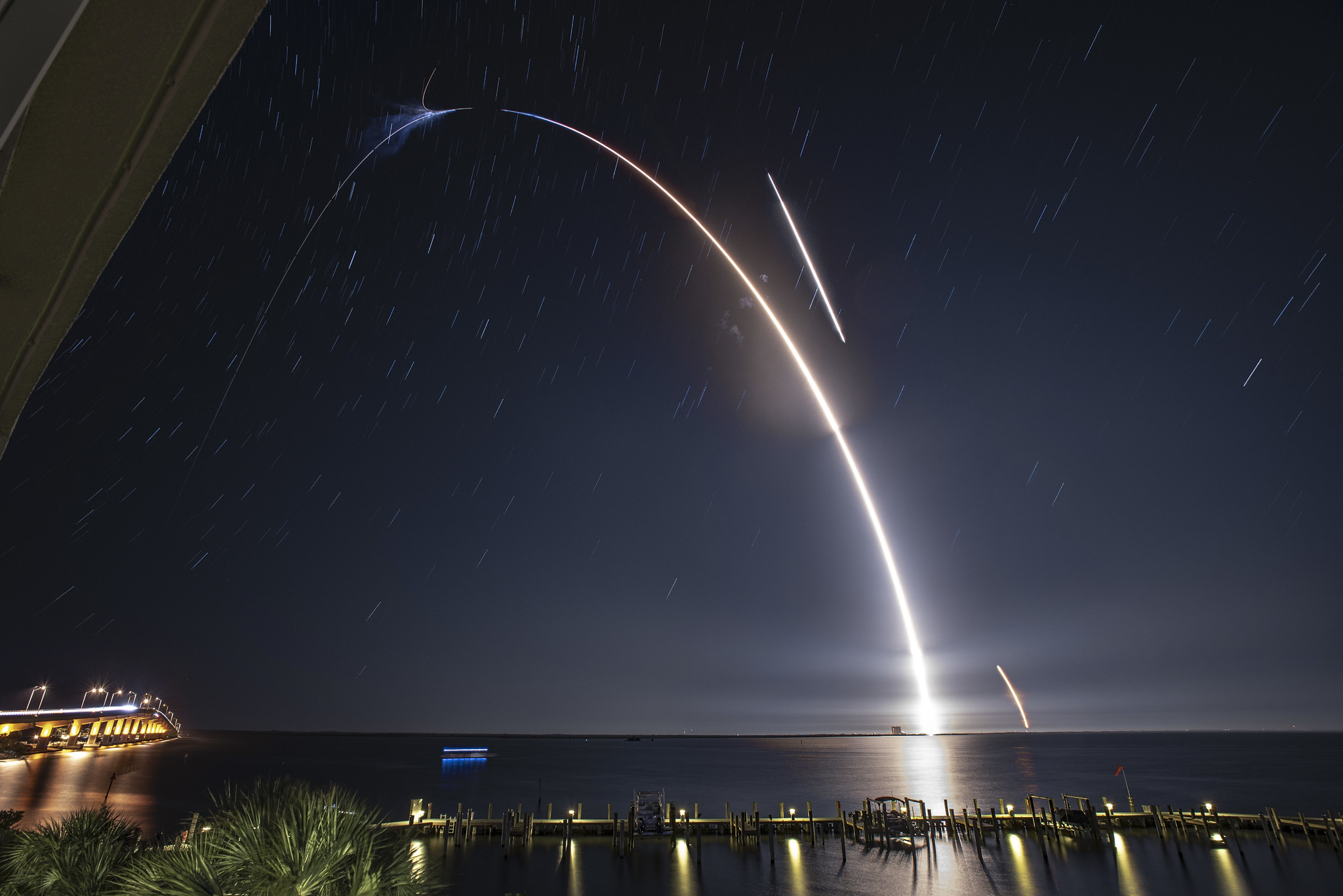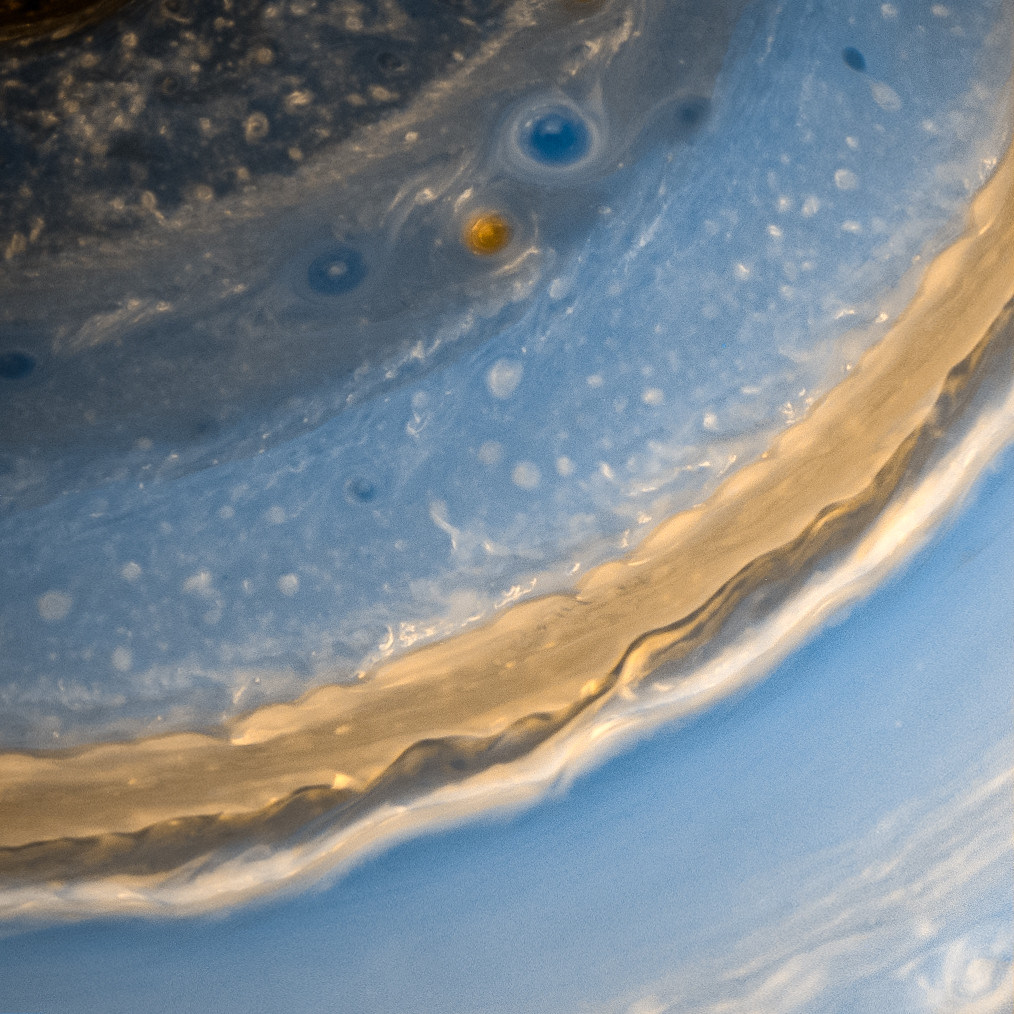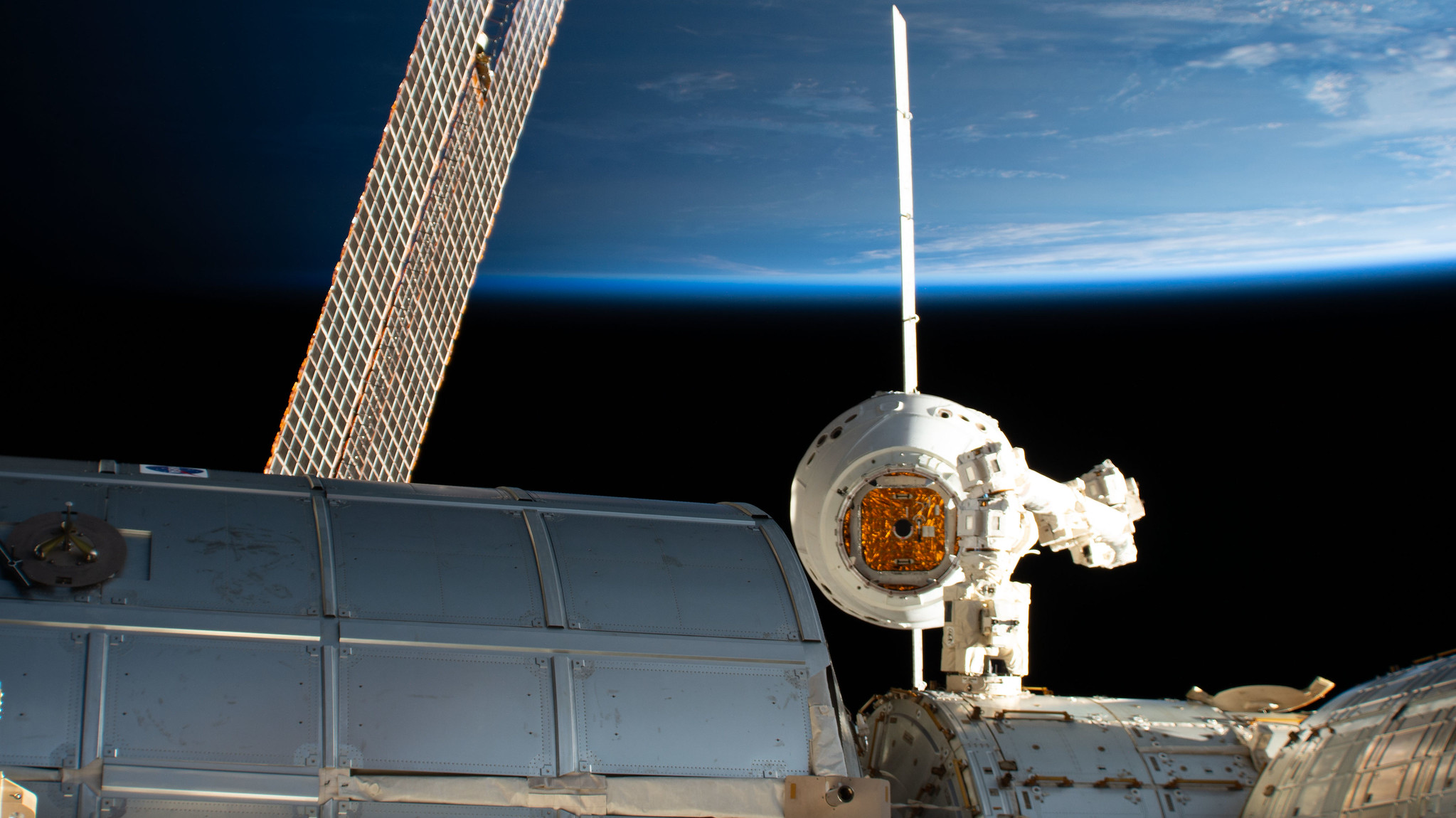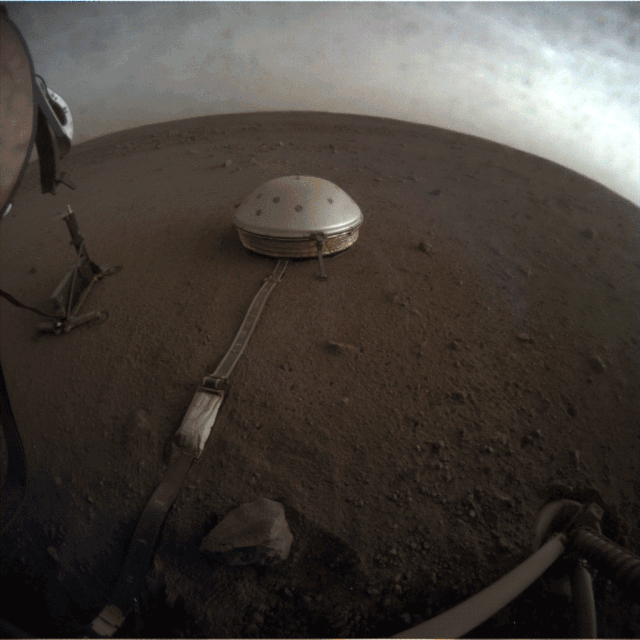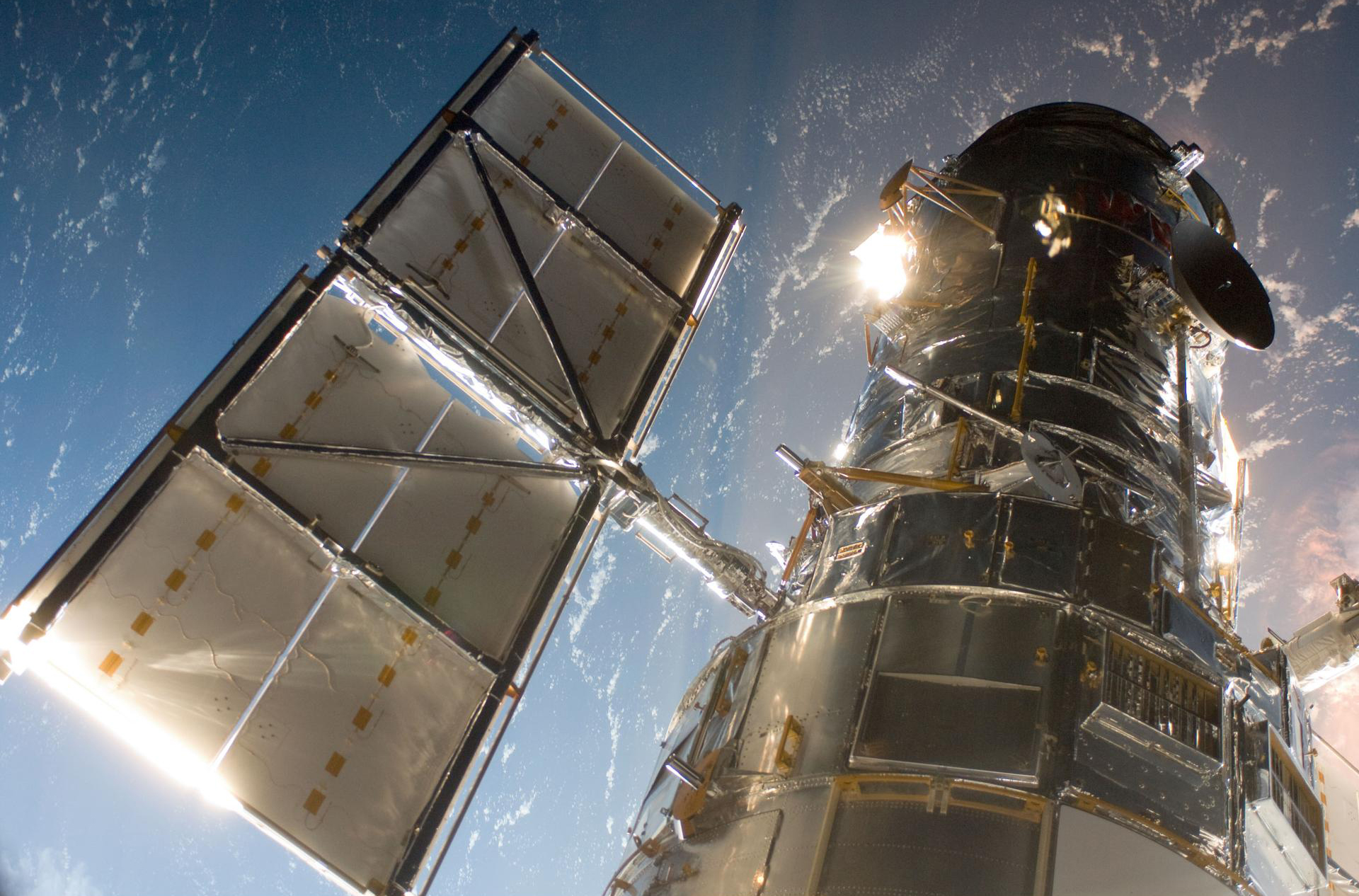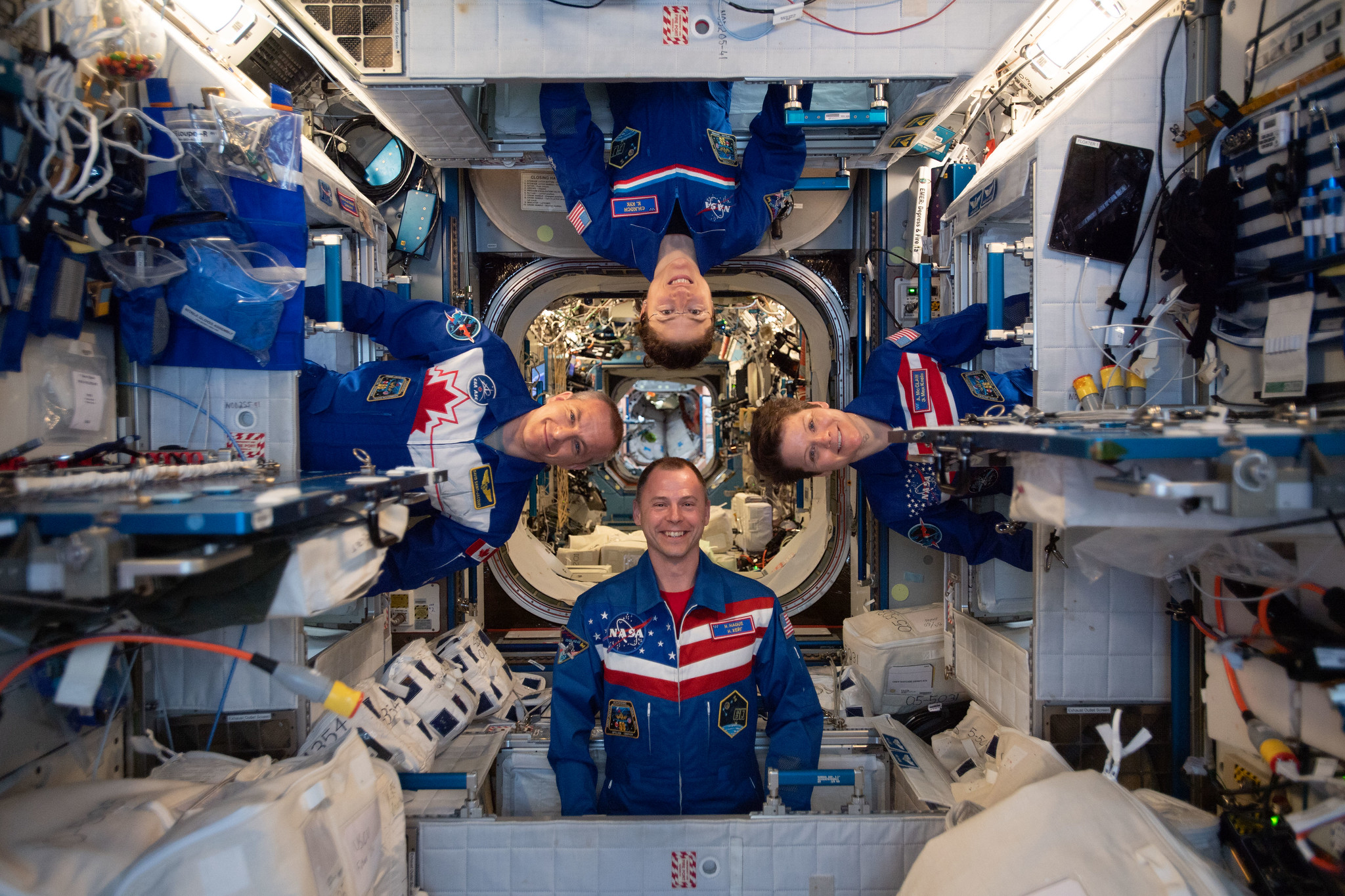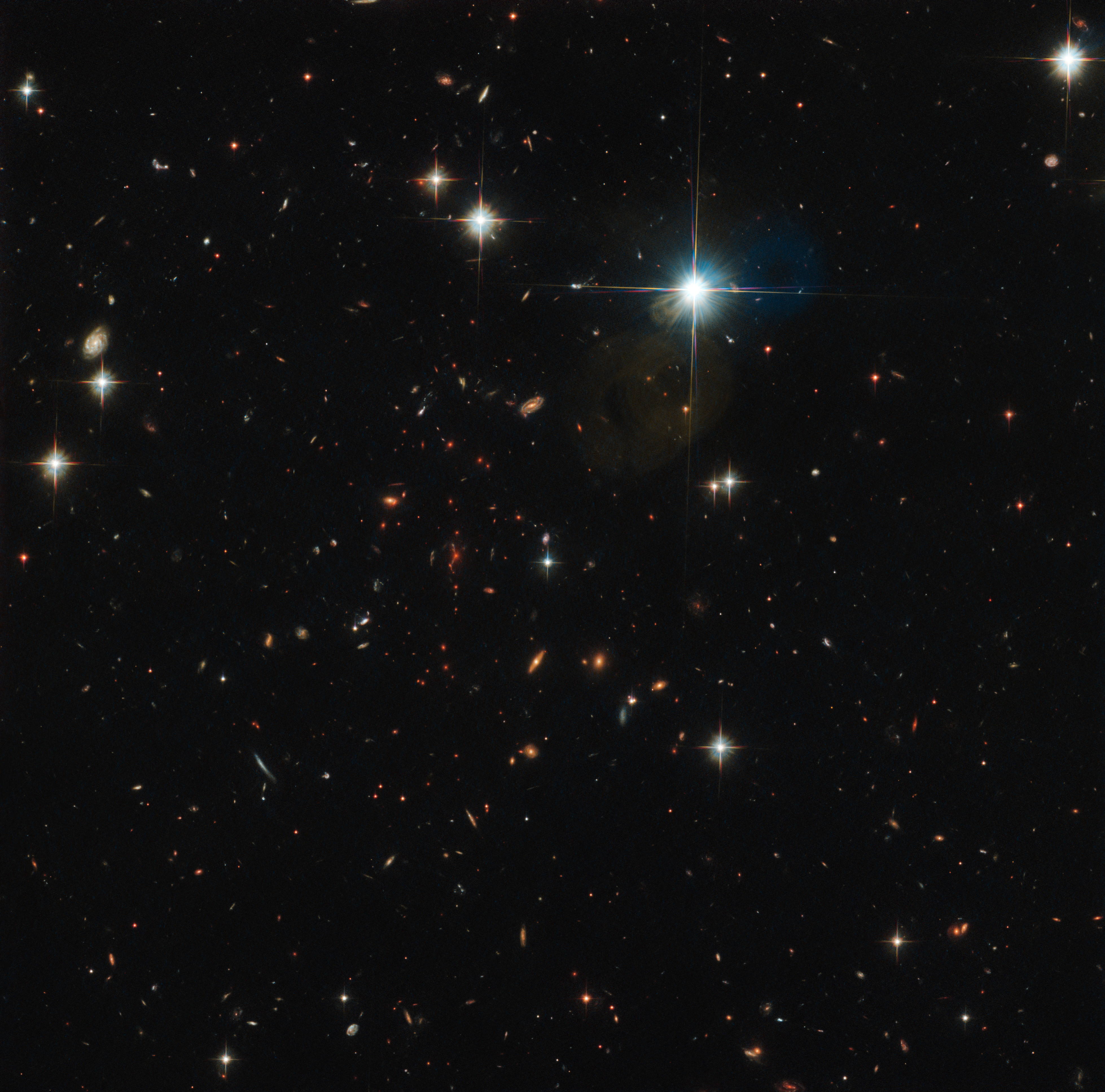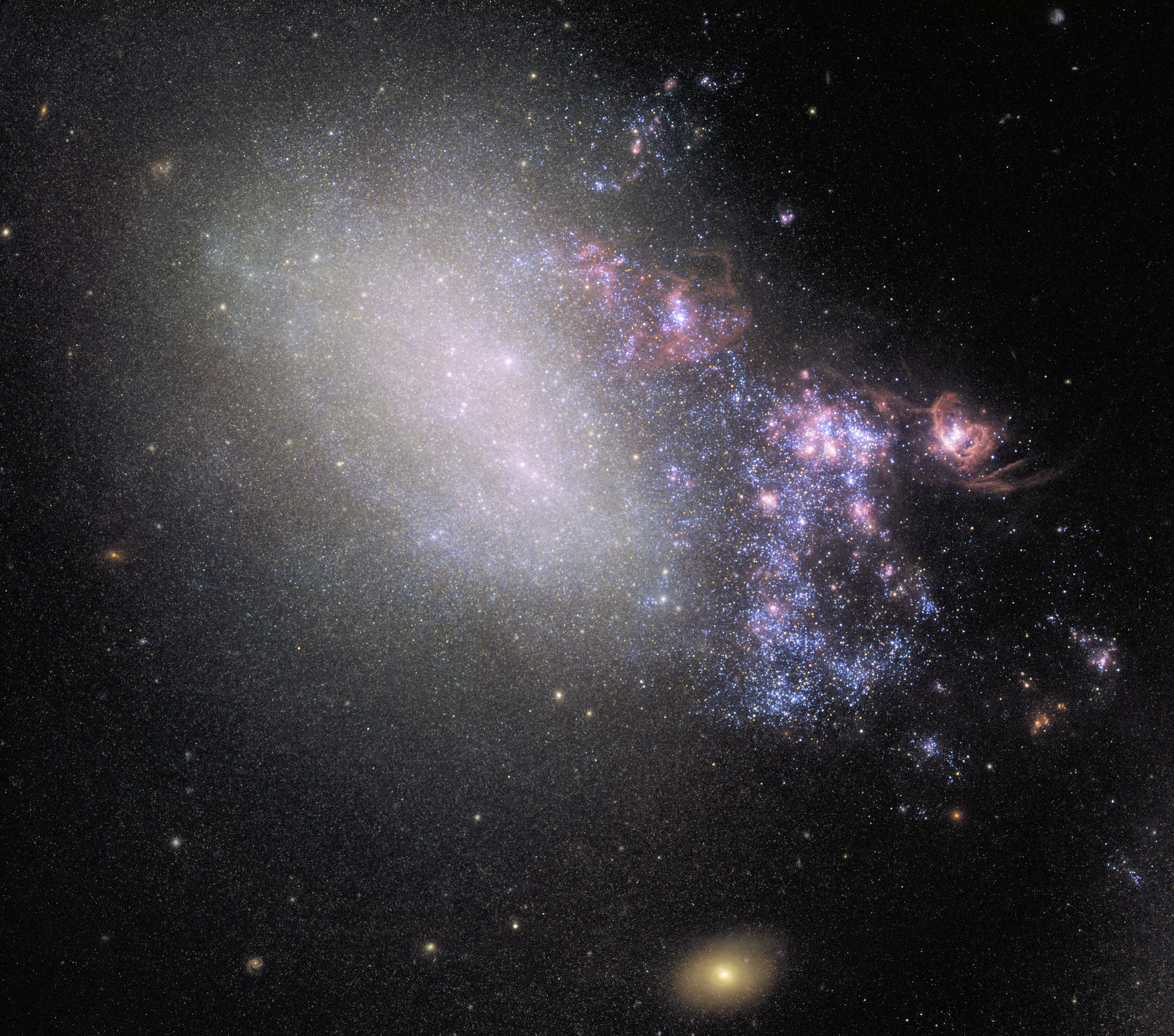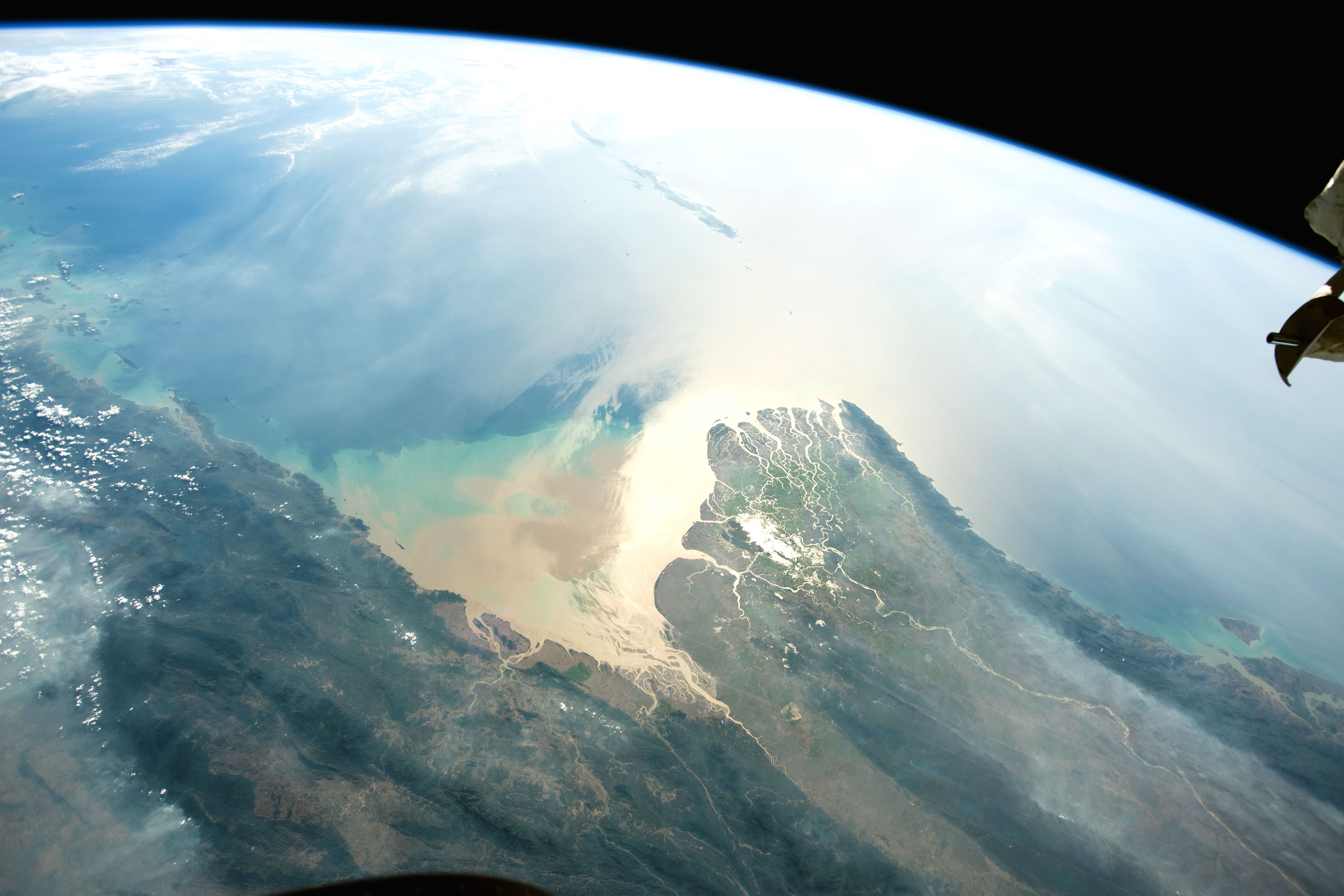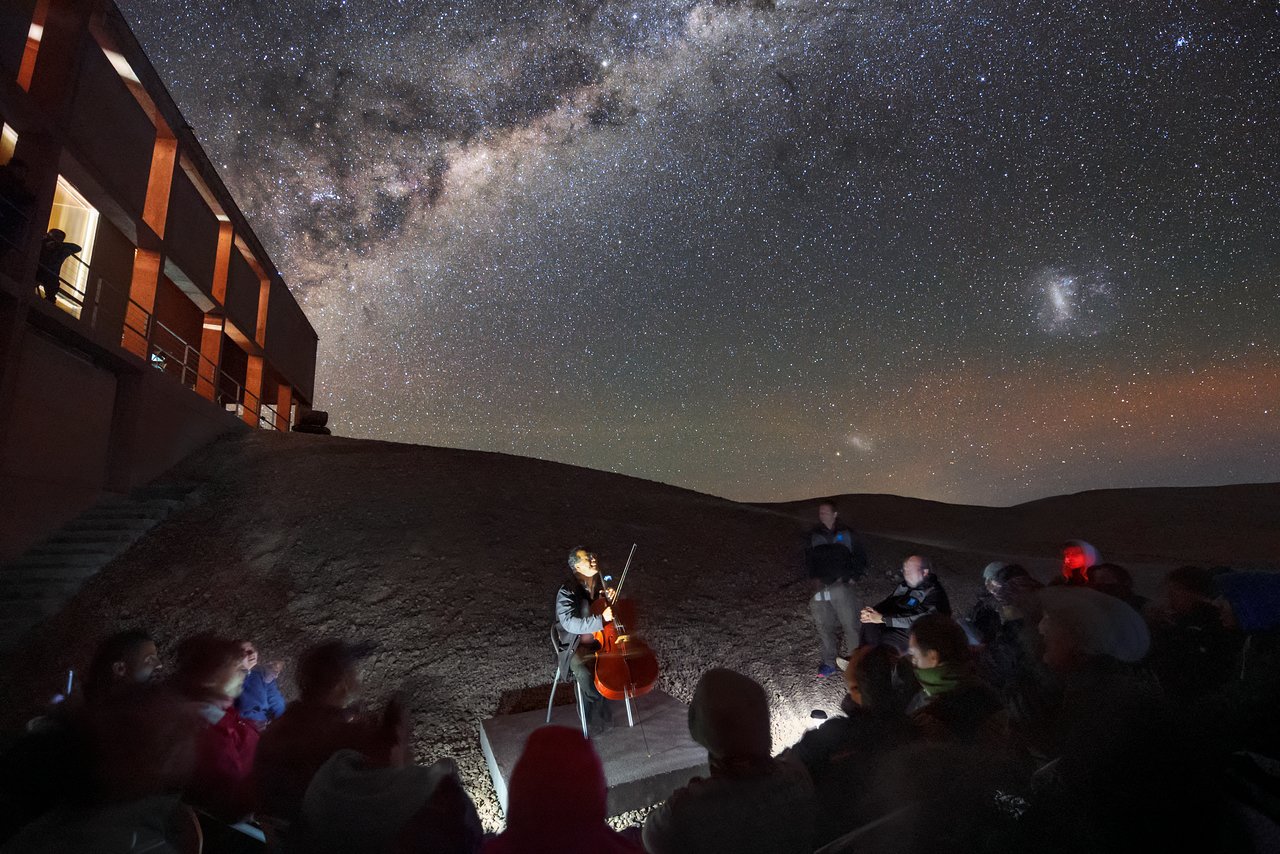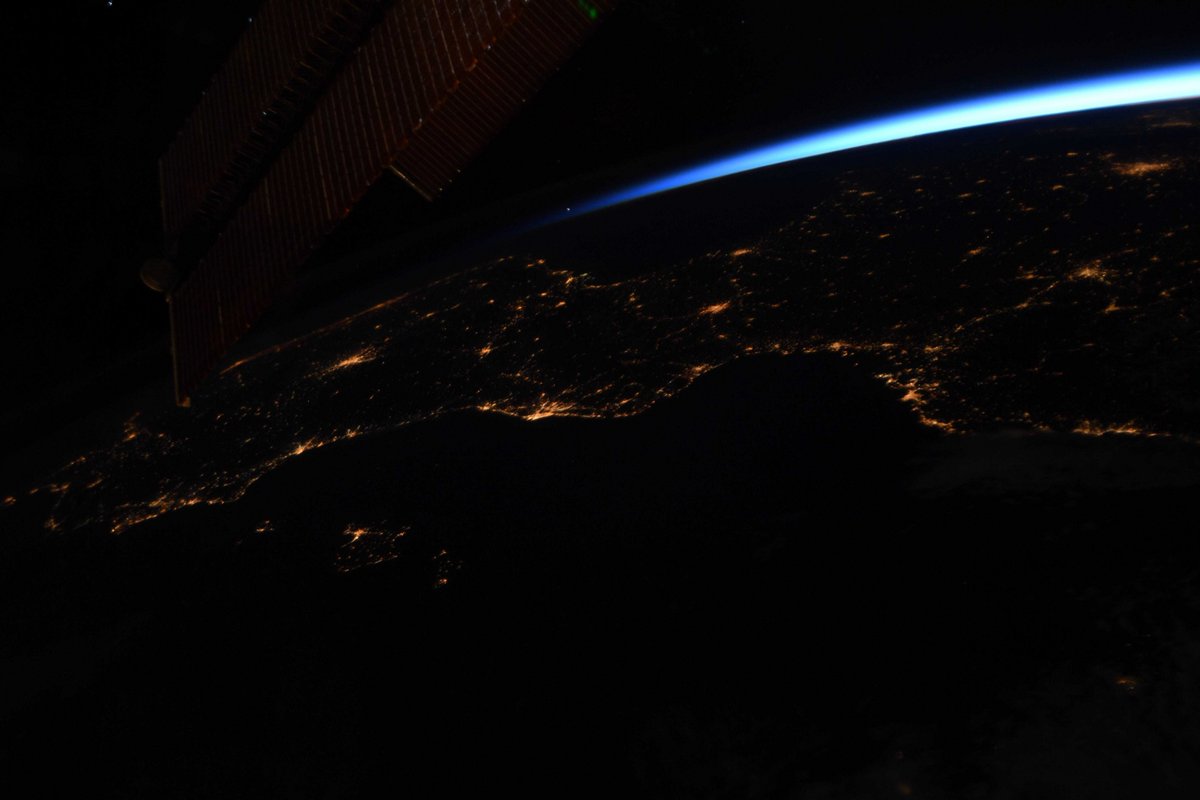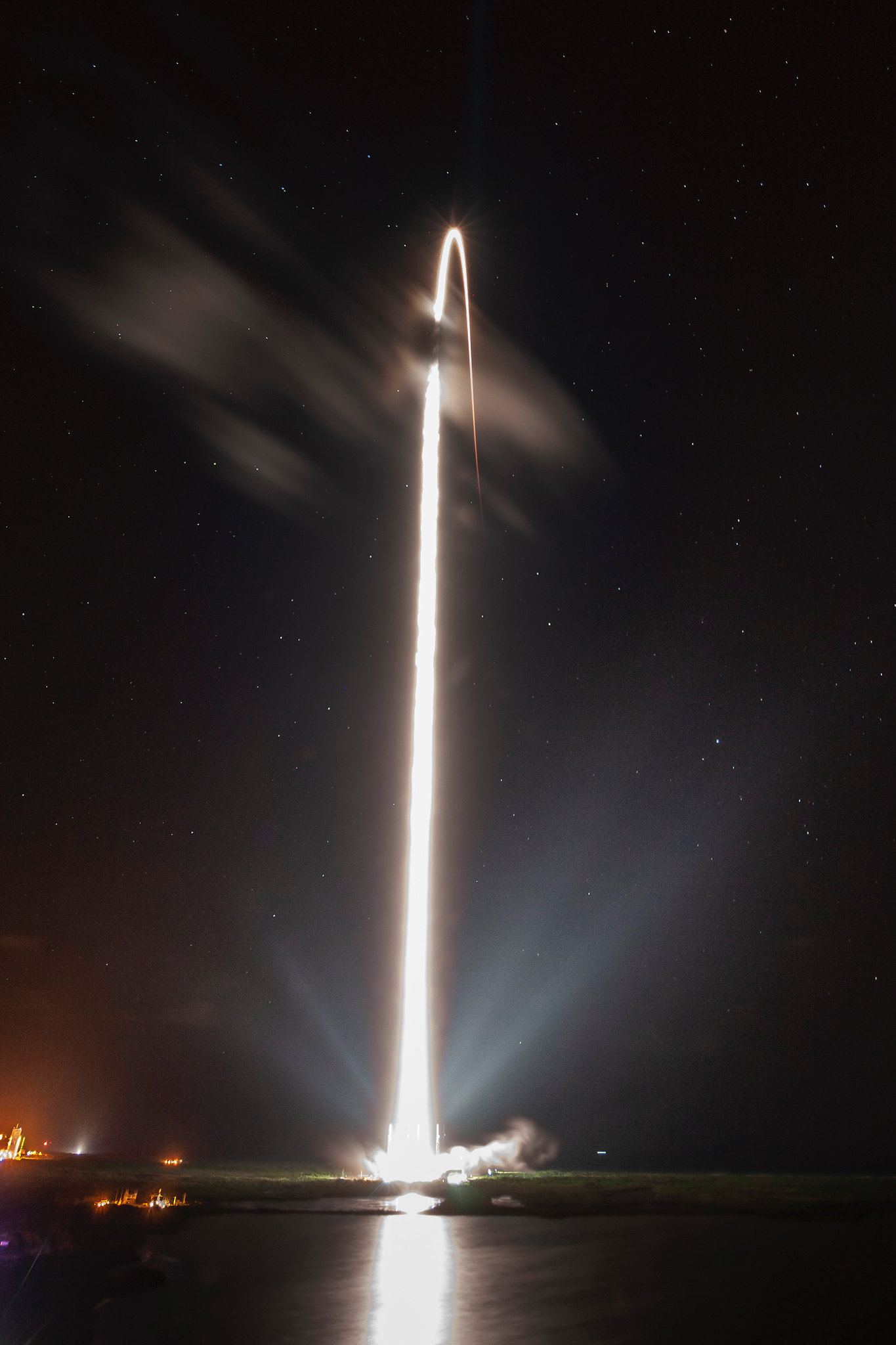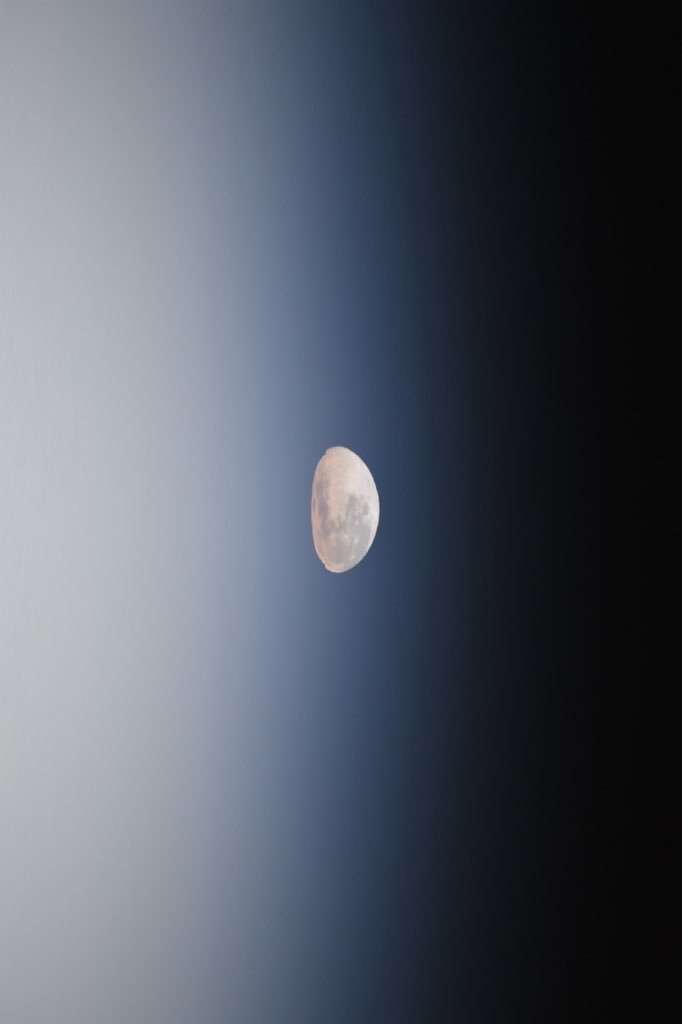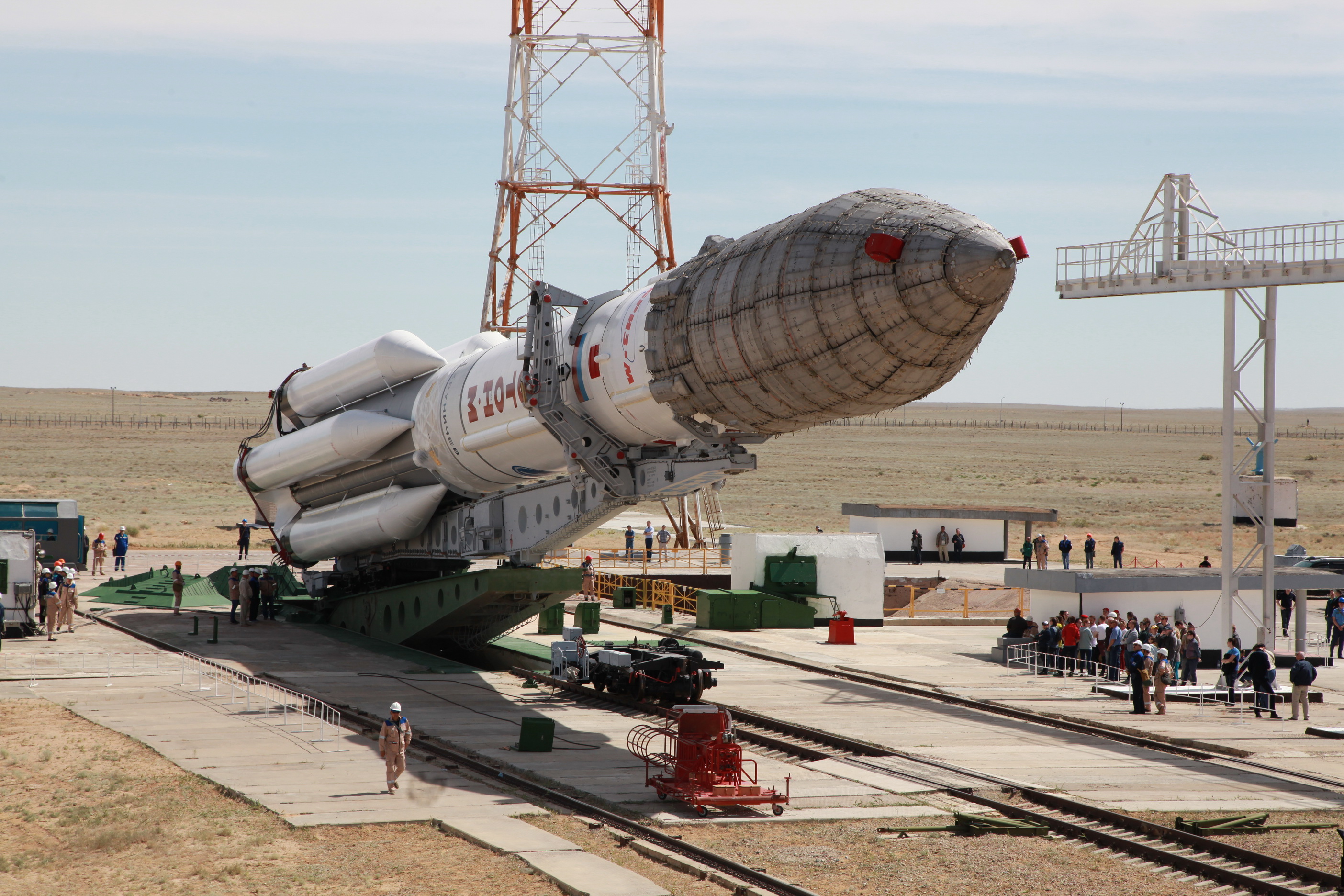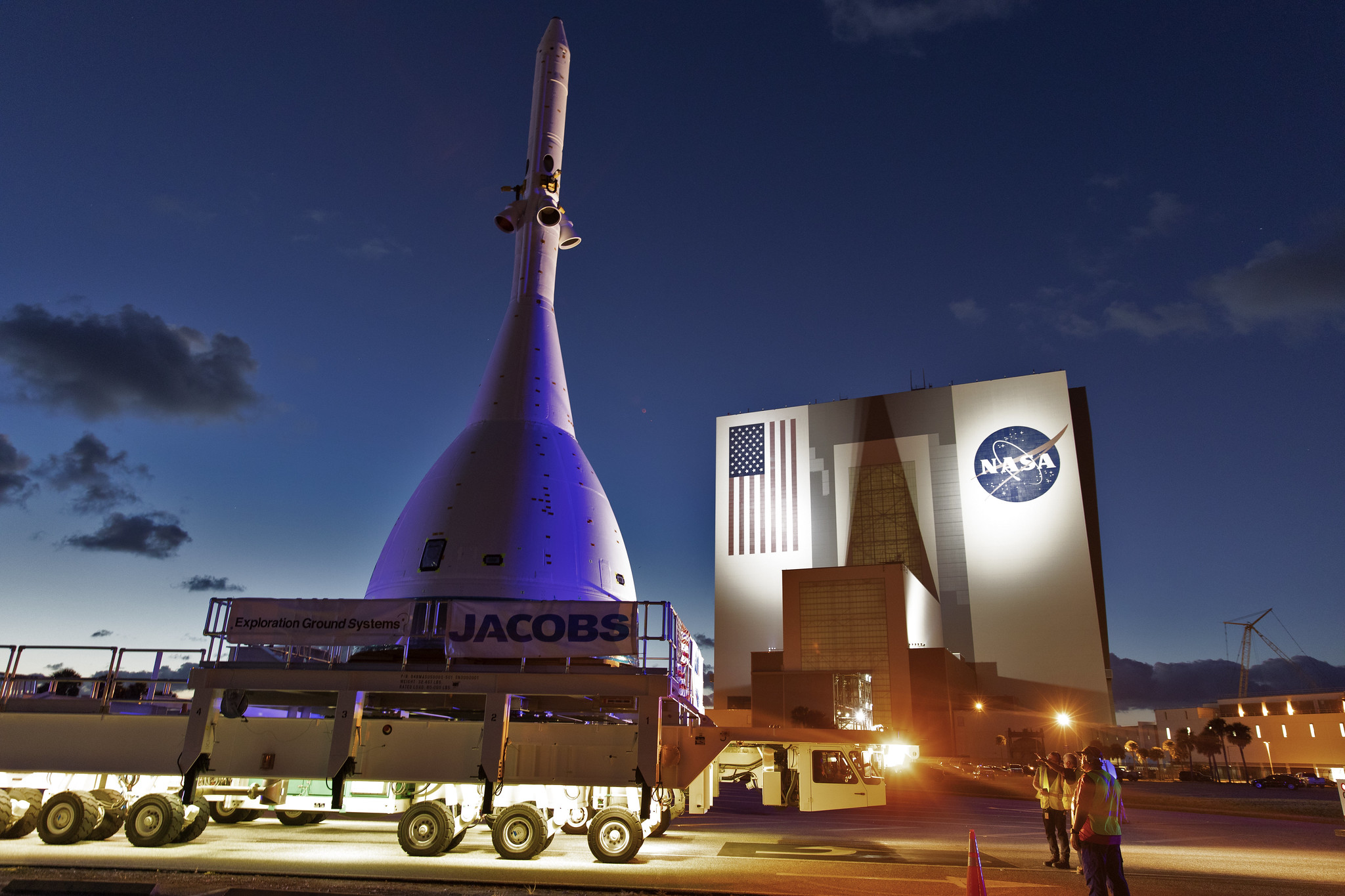Image of the Day 2019 Archive
Explore our Image of the Day 2019 Archives!
May 2019
Alluvial Fan Seen from Space
Wednesday, May 1, 2019: This peculiar landscape may look like it belongs to another planet, but it was spotted right here on planet Earth by NASA's Terra satellite. The image shows streams of storm water forming a geometric drainage pattern known as an alluvial fan. NASA's Terra satellite spotted this feature on the border between China and Mongolia, where the nearly parallel streams covered an area spanning about 10.9 by 22.6 miles (18 by 36.3 kilometers). — Hanneke Weitering
Galaxy-Mapping Satellite Spotted in Orbit
Thursday, May 2, 2019: The European Space Agency's Gaia spacecraft dashes across a field of stars in this view from the VLT Survey Telescope (VST) in Chile. While Gaia is scanning the stars to create the most detailed 3D map of the Milky Way galaxy yet, the European Southern Observatory's VST is keeping an eye on the spacecraft from Earth to precisely measure its orbit, which improves the accuracy of Gaia's star map. The spacecraft appears as a trail of dots near the bottom of the image, just to the left of the brightest star in the frame. — Hanneke
Columbus Meets the Southern Lights
Friday, May 3, 2019: A lime-green aurora lights up Earth's atmosphere over the Indian Ocean in this photo captured from the International Space Station. In the foreground is the Columbus module, a research laboratory that the European Space Agency launched to the station in 2008. — Hanneke Weitering
'Pillars' of the Milky Way
Monday, May 6, 2019: In this peculiar-looking panoramic shot of the Paranal Observatory in Chile, the Milky Way appears to form two tornado-shaped columns of starlight that extend down from the heavens to Earth's surface. This illusion is the result of the photographer, the European Southern Observatory's Petr Horálek, projecting an entire 360-degree panorama onto a flat, rectangular image. In reality, the Milky Way arcs across the sky from one horizon to the other; the fact that it appears to spread out across the top of this image is merely a product of the illusions. Also visible here are the Magellanic Clouds, the Pleiades star cluster, the bright planet Jupiter and several nebulas. You can explore the full-resolution image up close here. — Hanneke Weitering
The Falcon Flies on 'Star Wars Day'
Tuesday, May 7, 2019: A long-exposure photo of a Falcon 9 rocket launch shows the rocket's liftoff from Cape Canaveral Air Force Station, the separation of the booster and the upper stage, followed by the booster's descent for a drone-ship landing as the payload cruises into orbit. The SpaceX rocket pictured here launched a Dragon cargo spacecraft to the International Space Station on "Star Wars Day" (May 4). — Hanneke Weitering
Saturn Shines in False Color
Wednesday, May 8, 2019: Saturn's whirling cloud formations look absolutely mesmerizing in this close-up view from NASA's Cassini spacecraft. Citizen scientist Kevin Gill created this false-color image using near-infrared data collected by Cassini on Feb. 27, 2013. — Hanneke Weitering
Dragon on the Horizon
Thursday, May 9, 2019: A SpaceX Dragon cargo spacecraft approaches the International Space Station's Harmony module as astronauts maneuver the Canadarm2 robotic arm to capture it. The Dragon arrived at the station on May 6 carrying about 5,500 lbs. (2,495 kilograms) of supplies and science experiments for the Expeditino 59 crew. — Hanneke Weitering
Breaking space news, the latest updates on rocket launches, skywatching events and more!
A Cloudy Day on Mars
Friday, May 10, 2019: Grey clouds scoot across the Martian sky in this view from NASA's InSight lander. The spacecraft photographed the drifting clouds during a sunset on the Red Planet on April 25 using its Instrument Context Camera, which is mounted below the deck. Sitting on the dirt the foreground is the Seismic Experiment for Interior Structure (SEIS) instrument, which is looking for seismic activity, or "Marsquakes." — Hanneke Weitering
Throwback to the Last Hubble Servicing Mission
Monday, May 13, 2019: On this day 10 years ago, astronauts on board the space shuttle Atlantis began the fourth and final servicing mission of the Hubble Space Telescope. One of the STS-125 crewmembers snapped this photo of the iconic telescope after the astronauts grappled it with the Canadarm robotic arm on May 13, 2009. Over the next five days, the crew conducted five spacewalks to install two new instruments on Hubble, the Wide Field Camera 3 and Cosmic Origins Spectrograph, along with some new batteries, sensors and gyroscopes. — Hanneke Weitering
Which Way Is Up?
Tuesday, May 14, 2019: Which way is up in space? For the Expedition 59 astronauts on the International Space Station, it's multiple choice. That's clear in this playful weightless portrait of the astronauts taken in the station's Harmony module on April 30. Seen here are: (Clockwise from top) NASA astronauts Anne McClain, Christina Koch, Nick Hague and Canadian Space Agency astronaut David Saint-Jacques. -- Tariq Malik
A Painting of Galaxies
Wednesday, May 15, 2019: The galaxy cluster SPT0615 paints a stunning visage across the constellation Pictor (The Painter's Easel) in this dazzling view from the Hubble Space Telescope released May 10, 2019 by the European Space Agency. Also known as SPT-CL J0615-5746, this galaxy cluster is one of the farthest observed to cause gravitational lensing.
"Gravitational lensing occurs when light from a background object is deflected around mass between the object and the observer," ESA officials said. "Among the identified background objects, there is SPT0615-JD, a galaxy that is thought to have emerged just 500 million years after the Big Bang. This puts it among the very earliest structures to form in the Universe. It is also the farthest galaxy ever imaged by means of gravitational lensing." -- Tariq Malik
A Galaxy Ripped to Shreds
Thursday, May 16, 2019: What was once a spiral galaxy much like the Milky Way has been reduced to a shapeless swarm of stars and cosmic dust thanks to the gravitational pull of a galactic neighbor. In this Hubble image, NGC 4485 — which is now categorized as an "irregular" galaxy — is being distorted by the spiral galaxy NGC 4490, located out of the frame of this image to the bottom right.
NGC 4490 is also pulling a stream of "bright knots and huge pockets of gassy regions, as well as enormous regions of star formation in which young, massive, blue stars are born," European Space Agency officials said in a description of the image. — Hanneke Weitering
Frosty Dunes on Mars
Friday, May 17, 2019: Swirling Martian sand dunes are covered with carbon-dioxide frost and dust in this new image from NASA's Mars Reconnaissance Orbiter. The image, captured by the orbiter's HiRISE (High Resolution Imaging Science Experiment) camera, is the first of a new series of images that researchers will use to study changing seasonal processes on Mars. — Hanneke Weitering
Jezero Crater: Landing Site for Mars 2020
Monday, May 20, 2019: A colorful image from NASA's Mars Reconnaissance Orbiter (MRO) features Jezero Crater, an ancient lake bed on the Red Planet where the agency plans to send its next Mars rover. Named Mars 2020, the rover is scheduled to launch next summer and will touch down in the 28-mile-wide (45 kilometers) crater in February 2021. Spectral data from MRO's imaging instruments revealed that sediments in the area are rich with minerals "that indicate chemical alteration by water," NASA officials said in a description of the image. — Hanneke Weitering
Sunglint on the Irrawaddy River Delta
Tuesday, May 21, 2019: Bright sunlight reflects off the Andaman Sea near the mouth of Myanmar's Irrawaddy river delta in this photo taken by an astronaut at the International Space Station. By pointing a camera at the "sunglint point," or the spot where sunlight reflects off the Earth and directly into the camera, astronauts can capture photos that emphasize the details of Earth's shorelines. — Hanneke Weitering
Blue Moon Above a Blue Planet
Wednesday, May 22, 2019: The Blue Moon looms high above the thin blue veil of Earth's atmosphere in this photo captured by an astronaut at the International Space Station. Because the full moon of May, also known as the "Flower Moon," was the third full moon in a season with four full moons, it is considered a Blue Moon by the traditional or "seasonal" definition of the term. The modern definition of a Blue Moon is the second full moon in one month, and the next time that happens will be on Oct. 31, 2020. — Hanneke Weitering
'Strings by Starlight'
Thursday, May 23, 2019: The world-renowned cellist Yo-Yo Ma treats astronomers to a starlit performance at the Paranal Observatory in the Atacama Desert of northern Chile. For this exclusive concert on May 1, 2019, Ma requested to play in a dark-sky site under the shimmering band of the Milky Way galaxy. To the right of the Milky Way are two of our galactic neighbors known as the Magellanic clouds, which are glowing through the subtle red and green airglow above the horizon. — Hanneke Weitering
Europe's City Lights Seen from Space
Friday, May 24, 2019: Europe's city lights gleam through clear skies in this post-sunset photo by Canadian Space Agency astronaut David Saint-Jacques. "Cloudless night over Spain and Southern France. I imagine people dining outside," Saint-Jacques tweeted from the International Space Station. Barely visible in the foreground near the top of the image is a portion of one of the station's solar arrays. — Hanneke Weitering
SpaceX's Starlink Streak
Monday, May 27, 2019: A SpaceX Falcon 9 rocket carrying the company's first 60 Starlink satellites streaks into space from Cape Canaveral Air Force Station in Florida on May 24, 2019 in this dazzling long-exposure view taken by a SpaceX photographer. It was a landmark launch for SpaceX in several ways.
First, it kicked off the beginning of a planned 12,000-satellite Starlink constellation to provide affordable internet access to people around the world. And second: The launch marked the third launch and landing of the Falcon 9 first stage booster, another step forward for SpaceX's reusable rocket program. You can see more Starlink launch photos here! — Tariq Malik
Squashed Moon
Tuesday, May 28, 2019: The moon looks a bit squashed in this stunning photo by NASA astronaut Christina Koch, Expedition 59 flight engineer, on the International Space Station. Koch shared the image on May 24, 2019, about a week after it was taken.
"Moon set from last weekend showing how the atmosphere acts like a lens!," Koch wrote in a Twitter post. "Denser layers bend the light more, making the moon appear flatter as light reflected off of it travels through the denser atmosphere of Earth." You can see more amazing photos from the Expedition 59 crew here! — Tariq Malik
Ready to Launch
Wednesday, May 29, 2019: A Russian Proton-M rocket carrying the Yamal-601 telecommunications satellite is raised atop its launchpad at Baikonur Cosmodrome in Kazakhstan ahead of a May 30, 2019 launch. The rocket roll out occurred May 27. The Proton booster will launch Yamal-601 for the Russian satellite operator JSC Gazprom Space Systems. The satellite was built by Thales Alenia Space and will replace an older Yamal-202 satellite currently in orbit. Wondering how Russia launches rockets? Here's a photo tour of Russia's space centers. — Tariq Malik
Orion's Abort Rockets
Thursday, May 30, 2019: A prototype NASA Orion space capsule, equipped with its emergency abort motors passes by the agency's massive Vehicle Assembly Building at the Kennedy Space Center in Cape Canaveral, Florida on May 22, 2019. NASA will launch the capsule on Ascent Abort 2 (AA-2), a flight test to check Orion's abort system, on July 2. — Tariq Malik
Proton Rises
Friday, May 31, 2019: This vivid photo from Roscosmos shows the agency's heavy-lift Proton-M rocket carrying a communications satellite, the Yamal-601, toward orbit. The rocket and satellite launched on May 30, 2019 from the Baikonur Cosmodrome in Kazakhstan. Read more about the launch and watch a video here. — Sarah Lewin
Can't find the date you're looking for? It may have been a weekend or holiday, when we don't normally update our Image of the Day.
Click 'NEXT PAGE' below for June >

Space.com is the premier source of space exploration, innovation and astronomy news, chronicling (and celebrating) humanity's ongoing expansion across the final frontier. Originally founded in 1999, Space.com is, and always has been, the passion of writers and editors who are space fans and also trained journalists. Our current news team consists of Editor-in-Chief Tariq Malik; Editor Hanneke Weitering, Senior Space Writer Mike Wall; Senior Writer Meghan Bartels; Senior Writer Chelsea Gohd, Senior Writer Tereza Pultarova and Staff Writer Alexander Cox, focusing on e-commerce. Senior Producer Steve Spaleta oversees our space videos, with Diana Whitcroft as our Social Media Editor.



